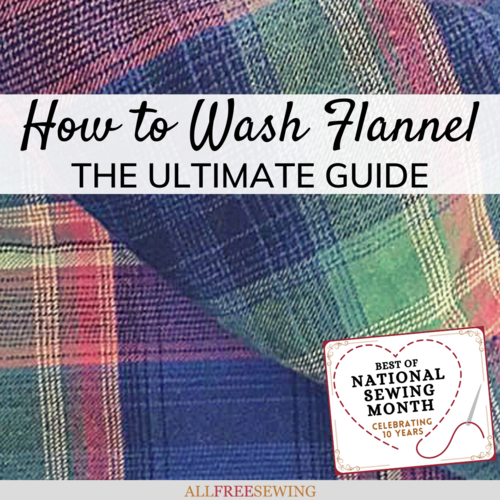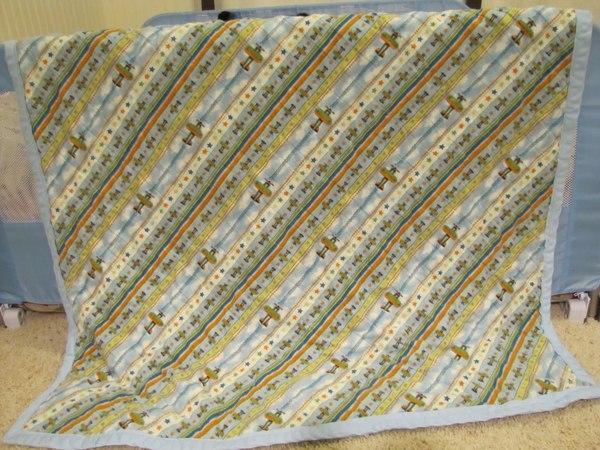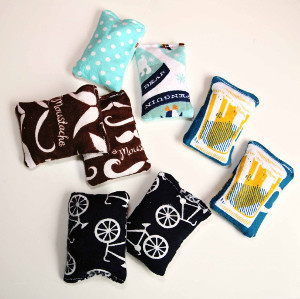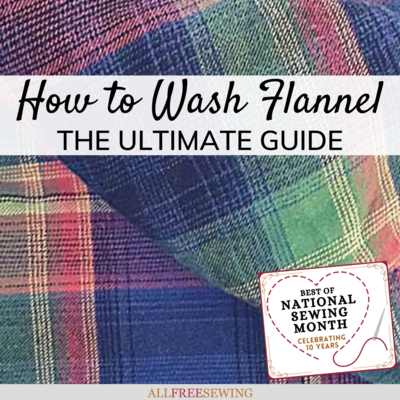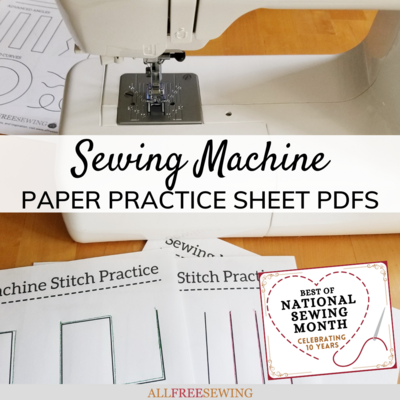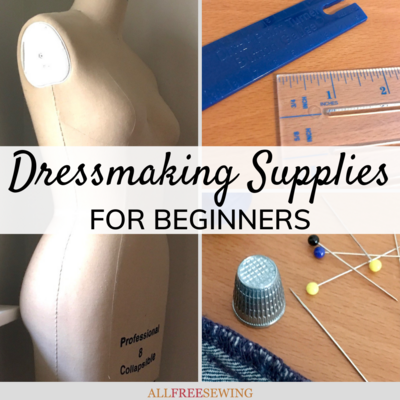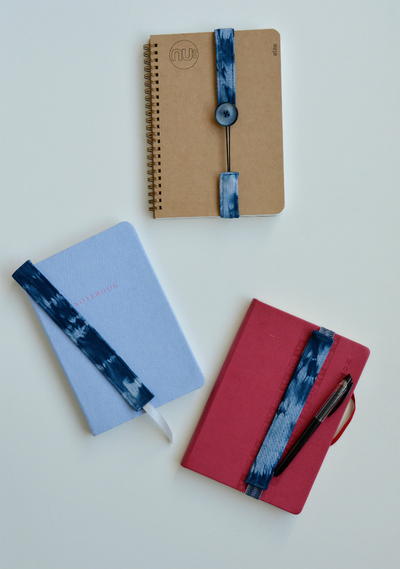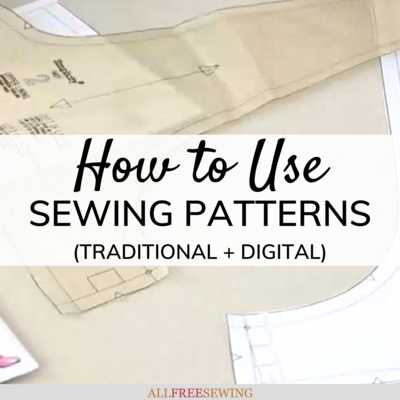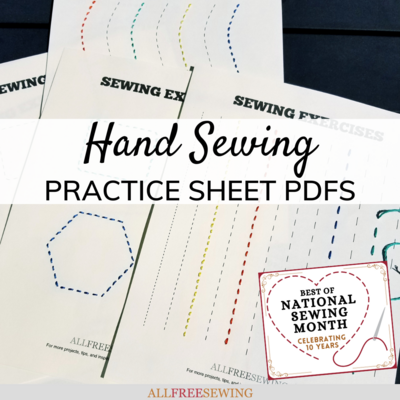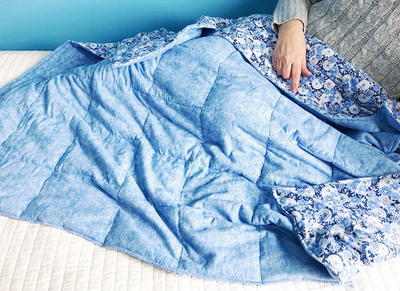How to Wash Flannel: The Ultimate Guide
Learn all about flannel including how to wash flannel shirts and other questions involving this fabric.
Flannel is the ultimate comfort fabric but it can be difficult to work with. The last thing you want is to shrink your brand-new shirt or blanket.
With this guide, How to Wash Flannel, we are answering the following flannel queries, such as what is flannel made of? and does flannel fray? Outside of the frequently-asked questions, learn how to wash your garments and other items made of this material.
We are also going to provide some fantastic tips for how to wear flannel and offer you some of our favorite flannel sewing patterns featured on AllFreeSewing.
Flannel is often mistaken for cotton, fleece, and other similar fabrics. There's also the misconception of flannel being called "plaid," which is simply the checkered pattern many flannels are printed with for items like shirts and blankets.
Flannel is a popular fabric that is available in many different patterns, not just plaid, as well as various products, from home decor to wearables for indoors and out.
This page is chock full of flannel facts for anyone, not just sewists. However, with all this information, you will have a much easier time preparing and sewing flannel for any of your upcoming projects.
Once you read this guide on flannel, you'll learn everything you've ever needed to know about this fabric and become an expert on flannel care and sewing today!
Sign up for our free newsletter for more!
How to Wash Flannel
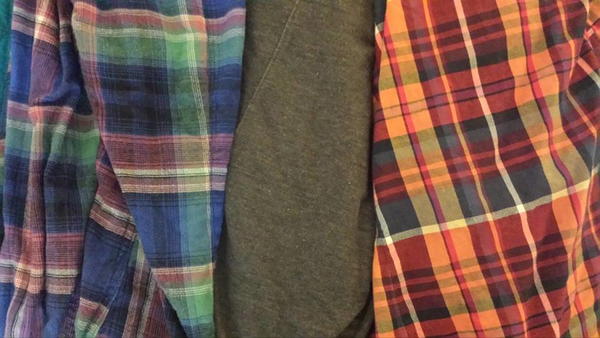
What is Flannel Made of?
The path of the first flannels to modern flannels involves a few different fibers. Flannel was originally made with worsted yarns or wool. Nowadays wool is still used but cotton and synthetics are also part of the flannel-making process.
Many flannels are made of blends, depending on how the final flannel piece is being used. Some of the most popular flannel types include:
Baby Flannel: Used for baby clothes and blankets, this flannel is usually 100% cotton or a cotton blend. It is incredibly soft to protect baby's sensitive skin.
Bocking Flannel: This is the (often) green backing used for gaming tables. It is also referred to as baize. It is usually a woolen or cotton blend but, unlike most other flannels, is on the coarser side because the nap percentage is reduced.
Ceylon Flannel: Ceylon is the original name for Sri Lanka. When it comes to the flannel type, this name refers to a cotton and wool blend. Shirts and sheets are usually made of Ceylon because it creates a warm and soft fabric.
Cotton Flannel: If you look at your favorite everyday flannel shirt, the label might read 100% cotton. Full cotton flannel is heavy (though not as heavy as when combined with wool) and soft. This makes it a popular clothing item for chillier weather, especially when combined with other clothing layers.
Diaper Flannel: As the name suggests, this is a flannel that is used when making cloth diapers. The full napping on both sides makes it soft. The 100% cotton that is used for this flannel type means it will remain sturdy with repeated washings.
Vegetable Flannel: This flannel type is made from Scots pine. It was invented by German L. Léopold Lairitz as an alternative to traditional wool. Vegetable flannel, like cotton, allows those with wool allergies to still have flannel options.
Wool Flannel: The original flannel fiber. Though wool is sometimes blended with other fibers, 100% wool flannel is incredibly warm and strong. The wool is carded, meaning it is rolled through a carding machine which pulls out clumps and softens the fiber to prepare it for creating a fabric.
Just as the fibers used vary, so does the thickness. A flannel made for outdoor activities will be thicker, usually made with a wool blend, according to Encyclopaedia Britannica.
"For outerwear, generally wool or blends with wool, or blends of man-made fibres, are used in an even-twill weave. With an all-wool flannel fabric excellent tailored garments can be produced; felting shrinkage can be prevented by blending with various man-made fibres, and washable men's suits are produced through blending wool with acrylic, nylon, or polyester fibres." — The Editors of Encyclopædia Britannica
Flannel is a weave, either in a plain or twill pattern. Flannel is incredibly soft, mainly because it is napped on both sides. Napping is a soft surface on the fabric. Some fabrics, like leather, have this on one side but flannel is extra soft because of the double napping.
How to Wash Flannel: Overview
Before we get into the specifics of washing flannel, let's go through some FAQs. One of the biggest concerns with cotton and wool fabrics is that they tend to shrink in the wash. So, does flannel shrink? Yes, flannel can shrink. That's why washing it correctly is so important.
If you buy a shirt, the label will indicate whether some shrinkage will occur but it's best to play it safe. Even pre-washed flannels can shrink slightly. Consider this when purchasing a flannel shirt. If it's a perfect fit or slightly snug, you may want to go up a size.
When you buy flannel fabric to work with, it is vitally important to wash and dry it before cutting and sewing. Otherwise, your cuts and stitches will be inaccurate and the size will be distorted.
Does Flannel Fray? Yes, flannel can fray. That is why thicker and reinforced seams are key to avoiding the fray. Clothing and sheets are fairly safe as they are sewn properly to avoid this. However, when you are sewing flannel, always use 3/8"–1/2" seams and use a thicker, sturdier thread.
Flannel pilling is also an issue with any flannel. With repeated use, washing, and drying, tiny balls of fabric will accumulate. To avoid pills, follow the directions below for washing and drying. To remove pills from flannel, use a clothes shaver that will run over the surface and gently remove the pilling.
The process for washing pre-made flannel pieces vs the washing process for flannel that you are going to use in sewing or craft projects is fairly different, which is why we have them in two sections below. Fabric that has already been prepared to use as is does not need to be as carefully prepared but it's still important to wash it correctly. To prepare flannel, the process is longer and more specific so that you are ready to use it without worrying about too much shrinkage or bleeding later.

How to Wash Flannel Shirts, Sheets, and Blankets: Machine Washing
These instructions can be used for machine washing any sort of ready-to-use flannel piece. Thoroughly read the care instructions for your shirt, sheets, blanket, etc.
Follow any directions or tips shown. If none, follow these steps to help keep shrinking and pilling to a minimum.
- Set your washer to warm wash and warm rinse. Do not use hot water in any part of the washing process.
- Add the correct amount of detergent (refer to the detergent label) to the machine when appropriate (each machine varies – this can be done before starting or during the filling process).
Note: A mild detergent will help with allergies and also help prevent fading and chemical distress over time.
- To help soften fabric, add fabric softener of choice (refer to label for amount) or white vinegar; 1 cup per normal load of fabric – adjust amount as needed.
Note: Dryer sheets can be used instead if desired in the drying process.
- Add flannel and run the wash cycle until complete.
- Set to low or no heat to dry. Remove promptly once dry and hang or lay flat to reduce wrinkles.

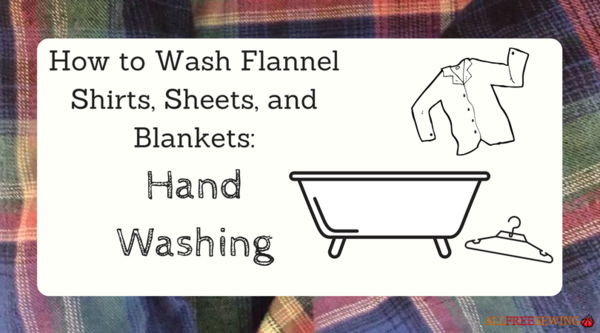
How to Wash Flannel Shirts, Sheets, and Blankets: Hand Washing
These instructions can be used for hand washing any sort of ready-to-use flannel piece. Thoroughly read the care instructions for your shirt, sheets, blanket, etc.
Follow any directions or tips shown. If none, follow these steps to help keep shrinking and pilling to a minimum.
- Fill a container that will hold your fabric with warm water.
- Add the correct amount of detergent (refer to the detergent label) once the desired level of water is reached. Mix it into the water with hands or tools.
Note: A mild detergent will help with allergies and also help prevent fading and chemical distress over time.
- Add flannel to the container. Using your hands or a tool, rotate the flannel inside the container to soak it with soapy water. Let sit for 10 minutes and then mix again.
- Dump out the water and wring the flannel until excess water has been removed.
- Fill the container with warm water again but without detergent and rinse the fabric by submerging and rotating the fabric. When the flannel seems rinsed, you can dump the water and refill or leave it for this next part.
- Add the fabric softener (refer to label for amount) or white vinegar (1 cup per normal load of fabric – adjust amount as needed) to the water.
- Submerge the flannel and swish around to cover the fabric with conditioning fluid. Leave for 5 minutes before dumping the water out.
- Rinse the flannel one more time in equally warm water as previously used. Do this until the fabric has no soapy residue. Wring as much as possible.
Note: Dryer sheets can be used instead if desired but only if using a machine to dry.
- Hang to dry and keep hanging or laid flat to reduce wrinkles or use a machine to dry.
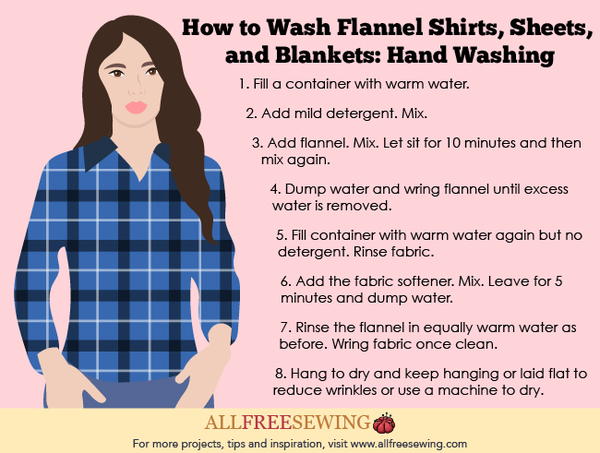
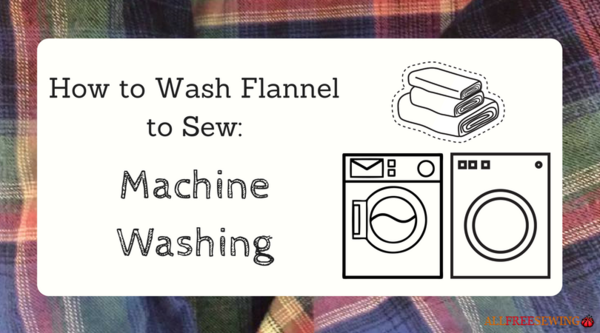
How to Wash Flannel to Sew: Machine Washing
When you buy fabric to craft with, you sometimes do not have to wash it. However, when it comes to flannel, you will want to wash it well before using it.
Unlike flannel which is sold and ready to use as is, flannel fabric sold for cutting and sewing is not washed well enough to prevent shrinking. By washing in the way below, you will shrink it before using it.
Follow these instructions if using a machine.
- Set your washer to HOT wash and HOT rinse.
- It is best to wash the flannel twice before working with it.
For the first wash: Do not add detergent.
For the second wash: Add the correct amount of detergent (refer to the detergent label) to the machine when appropriate (each machine varies – this can be done before starting or during the filling process).
Note: A mild detergent will help with allergies and also help prevent fading and chemical distress over time.
- ONLY FOR WASH #2:
Optional: Add fabric softener of choice (refer to label for amount) or white vinegar; 1 cup per normal load of fabric – adjust amount as needed.
Note: Dryer sheets can be used instead if desired in the drying process.
- Add flannel and run the wash cycle until complete.
- For both washes, set the dryer to HIGH heat to dry completely. Remove promptly once dry and hang or lay flat to reduce wrinkles. It can also be hung to dry (keep hanging or lay flat to reduce wrinkles).

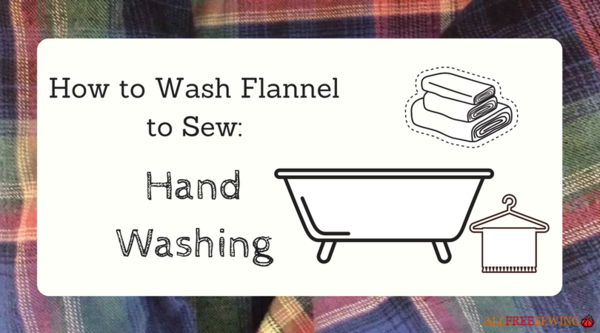
How to Wash Flannel to Sew: Hand Washing
As mentioned in the machine washing section, flannel bought to work with for craft projects should be washed and shrunk to prevent extra shrinkage when washed later.
Washing flannel by hand takes a bit more work than by machine. It may be worth taking it to a laundry mat to wash if you do not want to go through so many steps, otherwise, follow along and get that flannel ready for sewing.
- Fill a container that will hold your fabric with HOT water. Wear protective gear and be careful not to scald your body throughout this process.
- It is best to wash the flannel twice before working with it.
For the first wash: Do not add detergent.
For the second wash: Add the correct amount of detergent (refer to the detergent label) once the desired level of water is reached. Mix it into the water with your hands or tools.
Note: A mild detergent will help with allergies and also help prevent fading and chemical distress over time.
- Add flannel to the container. Using protected hands or a tool, rotate the flannel inside the container to soak in water. Let sit for a few minutes.
- Dump out the water and wring the flannel until excess water has been removed. Fill the container with HOT water again.
- Optional: Add the fabric softener or vinegar (refer to step 3 for details) to the water. Submerge the flannel and swish around to cover the fabric with conditioning fluid. Leave for 5 minutes before dumping water out.
- Rinse the flannel one more time in equally HOT water as previously used. Do this until the fabric has no soapy residue. Wring as much as possible.
- Hang to dry and keep hanging or laid flat to reduce wrinkles. If a machine dryer is available, use this and remove promptly once dry.
Click the image or button below to download the infographic for when you need it.
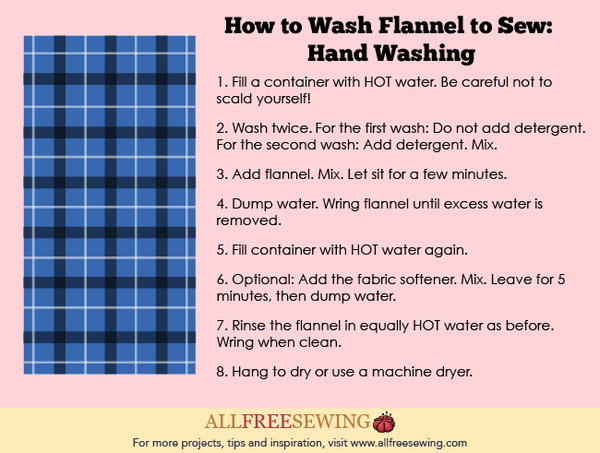
How to Wear Flannel
If you are familiar with lumberjacks and the music grunge era, you probably have an idea about how to wear a flannel.
Many flannel shirts button or snap down the front, which allows the wearer to leave it open or closed. Wearing a tank top or t-shirt underneath is usually a way to be fashionable as well as provide a cooler and warmer option for the outfit.
Wear a longer flannel shirt and tuck it in or tie to add a fashion statement. You can even sew flannel into a dress as is shown in the picture below. It's an awesome idea for your husband's oversized shirts he doesn't wear anymore!
Flannel is great because it can be dressed up or down by combining it with a skirt or worn over a dress or wearing it with jeans or leggings.
Even though flannel is warm, it can be made warmer with the addition of a vest over the shirt. This is a smart alternative to a jacket for fall or mild winter weather.
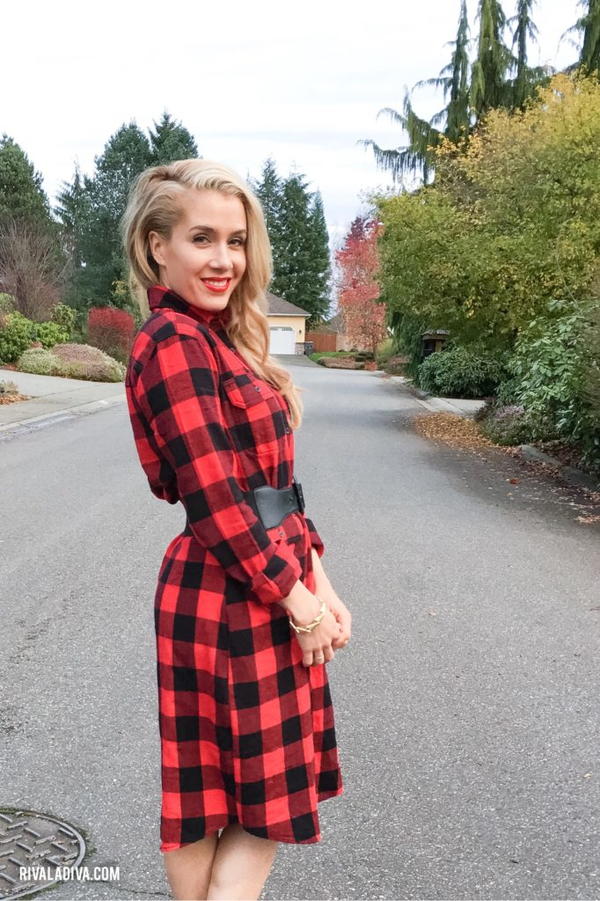
Free Flannel Sewing Patterns
Check out these flannel sewing patterns and see for yourself all the versatility there is with this type of fabric!
- Seattle Style Shirt Dress Refashion - pictured above!
- Toddler Flannel DIY Nightgown
- Fall Flannel Table Runner - pictured below!
- Extremely Easy Flannel Blanket
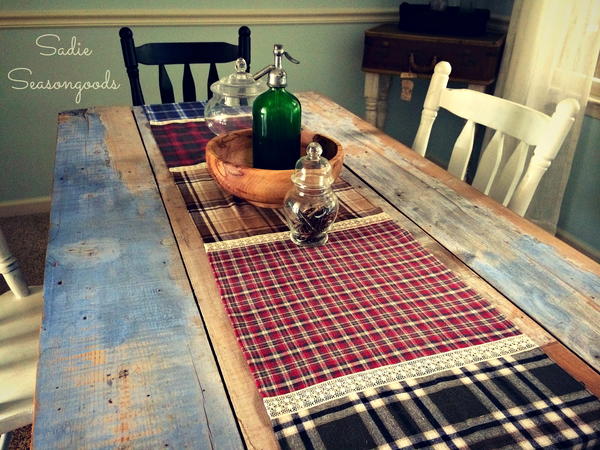
Want More?
How to Sew Canvas >>>
Do you have any tips for working with flannel?
Let us know in the comments!
Your Recently Viewed Projects
Report Inappropriate Comment
Are you sure you would like to report this comment? It will be flagged for our moderators to take action.
Thank you for taking the time to improve the content on our site.

